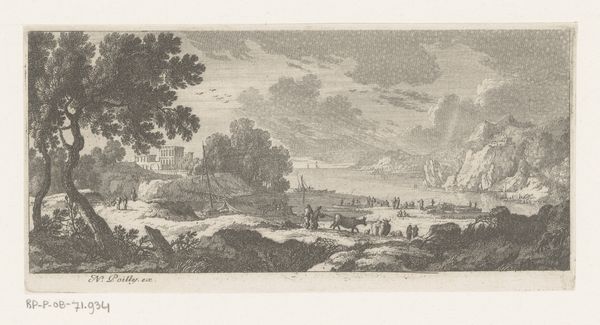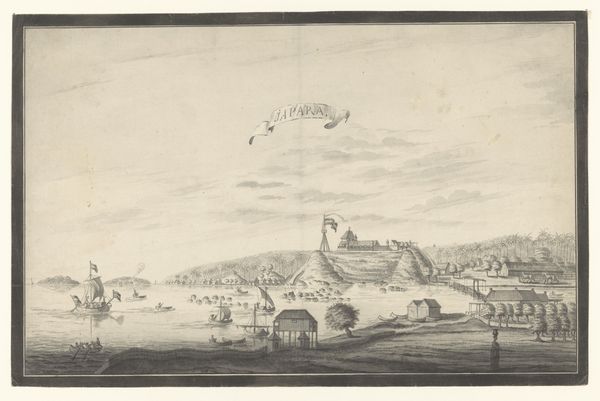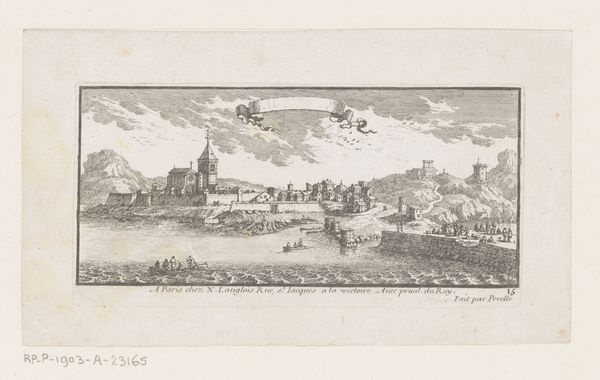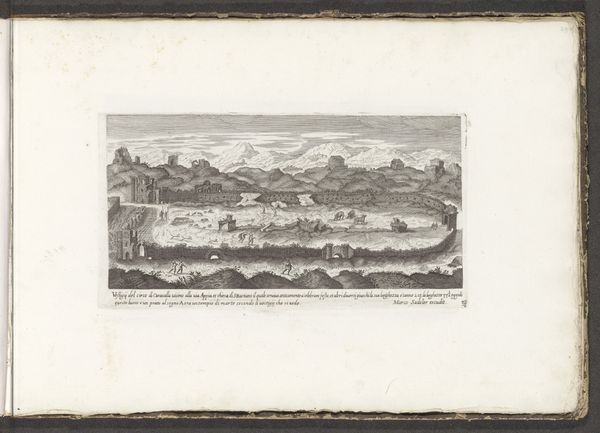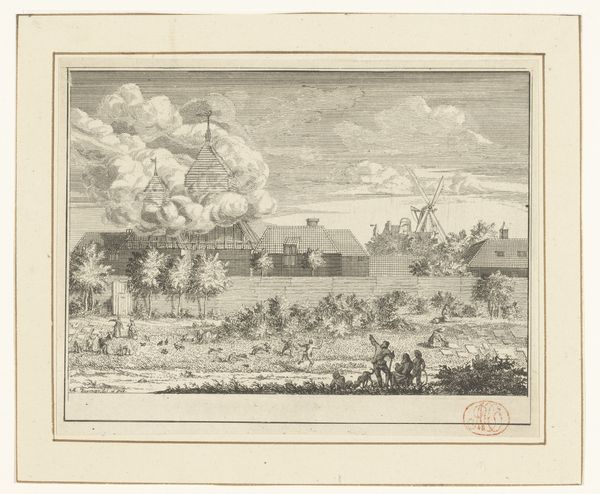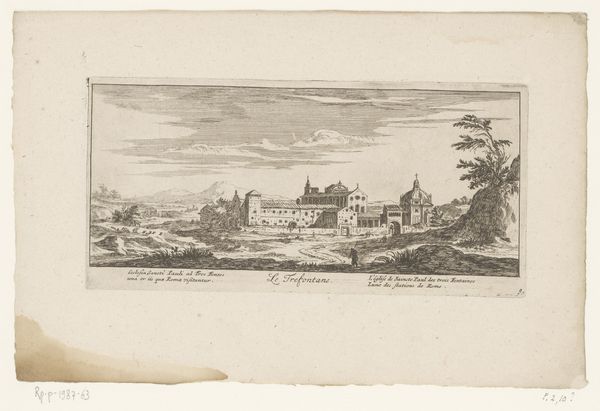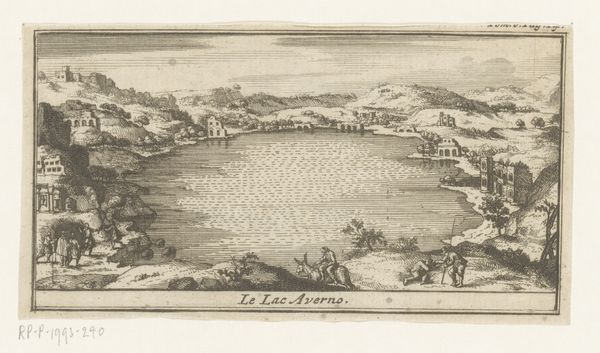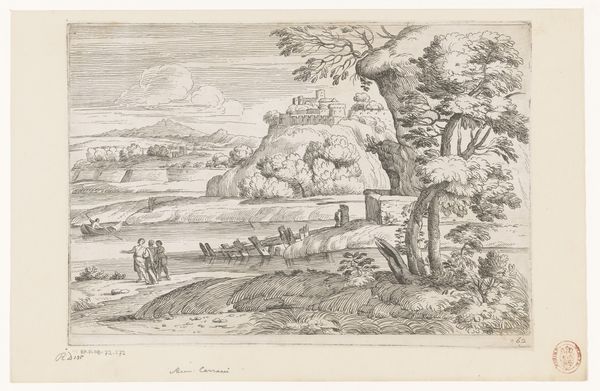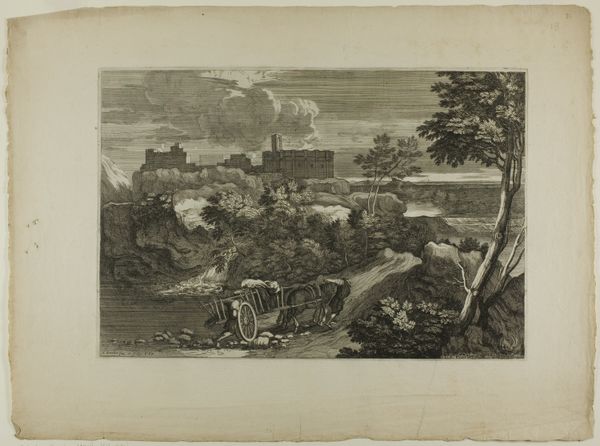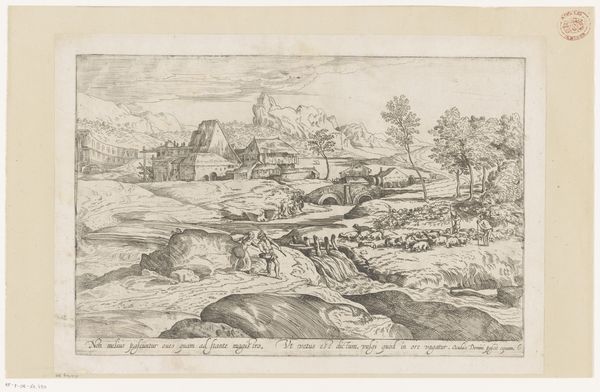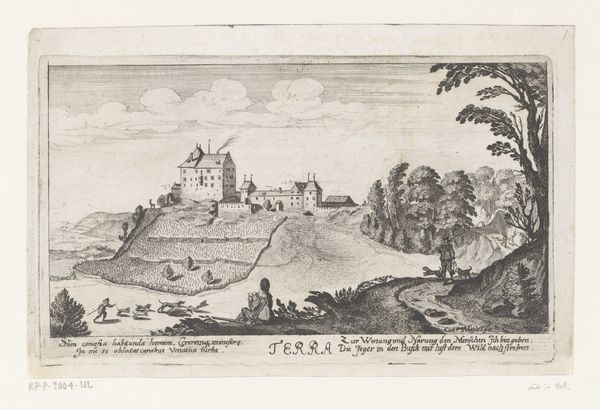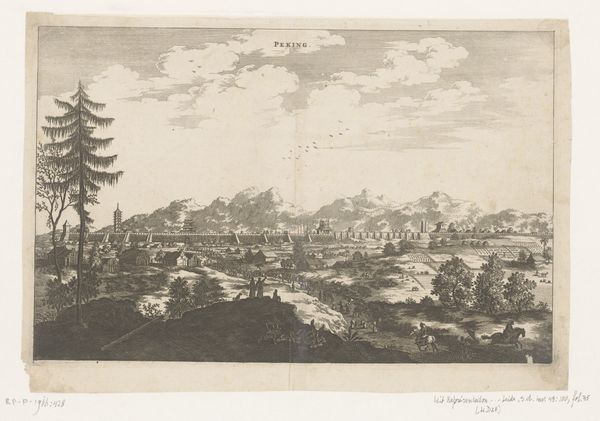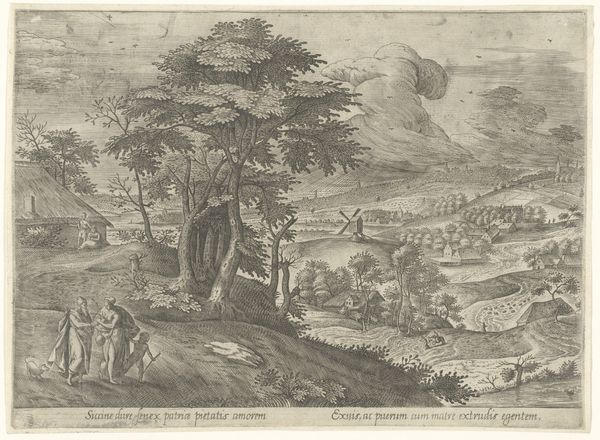
print, engraving
#
aged paper
#
light pencil work
#
baroque
#
mechanical pen drawing
# print
#
pencil sketch
#
old engraving style
#
landscape
#
personal sketchbook
#
pen-ink sketch
#
pen work
#
sketchbook drawing
#
pencil work
#
engraving
Dimensions: height 69 mm, width 130 mm
Copyright: Rijks Museum: Open Domain
Editor: This is "Romeinse zwavelbaden," or "Roman sulfur baths," an engraving by Pieter van der Aa, created sometime between 1682 and 1730. There’s almost a dreamlike quality to it. It feels both distant and detailed. What catches your eye in this piece? Curator: I’m immediately drawn to how Van der Aa represents the Roman bathhouses themselves. Notice how they're depicted not as pristine structures, but as ruins? These fragmented remains carry a heavy symbolic weight, speaking to the transience of empires and the passage of time. The bathing, itself, signified cleansing - and transformation. Editor: Transformation, like a rebirth? Curator: Precisely. The sulfur baths weren’t merely for hygiene; they were a ritualistic space where the bather might symbolically shed their old self and emerge anew. The very act of immersing oneself in water suggests purification, doesn't it? But here the sea becomes a symbol of broader life, chaos and opportunity - what do you see? Editor: The ships off shore juxtapose a further expansion into the unknown? With a potential implied challenge for its figures to seize control? Curator: Exactly! The image presents this concept between the distant ships and crumbled remains in a distinct contrast - expansion or preservation? A memory we're trying to seize or leave behind? It encapsulates a broader cultural memory – of Roman grandeur and the awareness of its ultimate decline. It’s this constant interplay of creation, dissolution, and re-emergence that makes it resonant for me. Editor: I never would have looked at it that way. Now, those ships almost taunt the figures in the water. So much more to think about than just people bathing! Curator: Precisely. It is often within those historical and cultural residues we find that true visual and conceptual insight may be discovered.
Comments
No comments
Be the first to comment and join the conversation on the ultimate creative platform.
